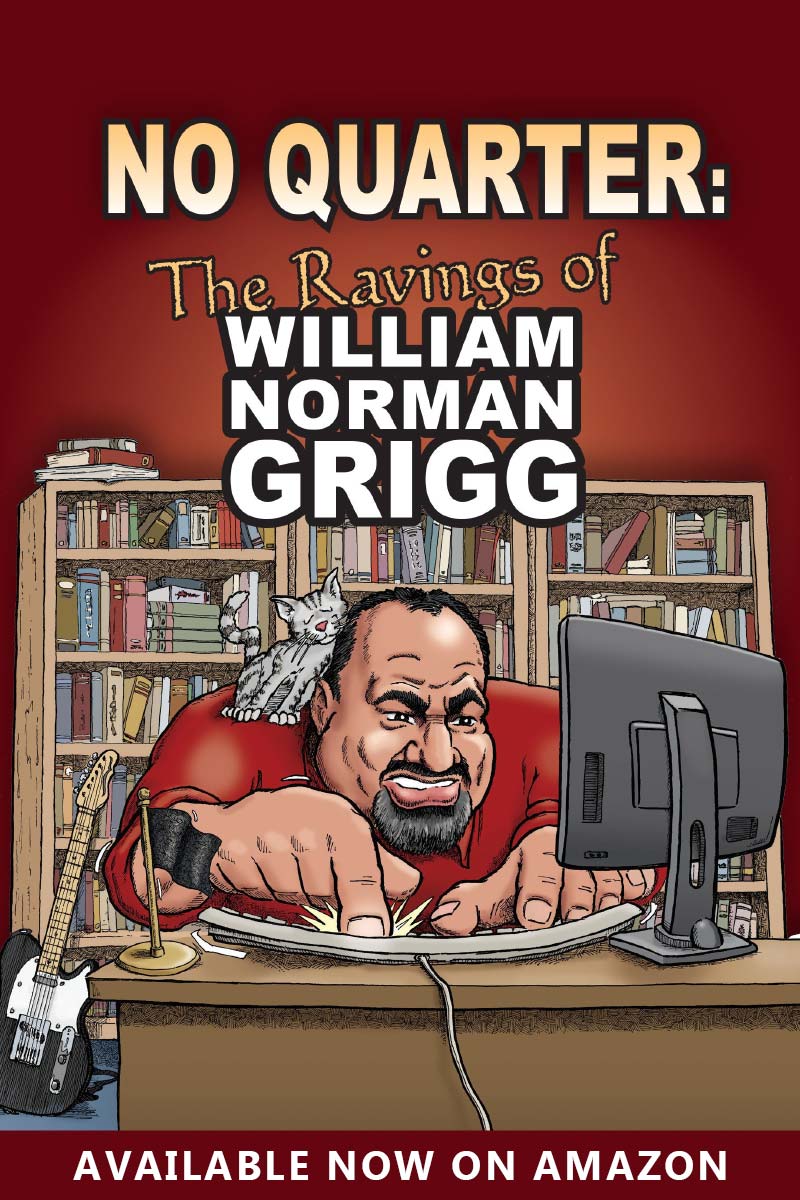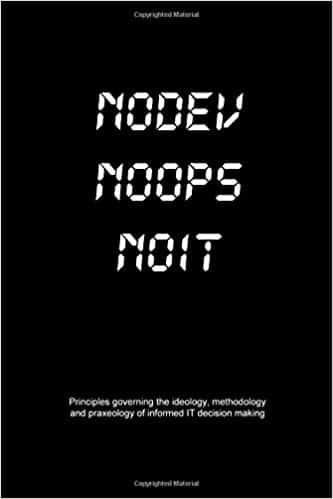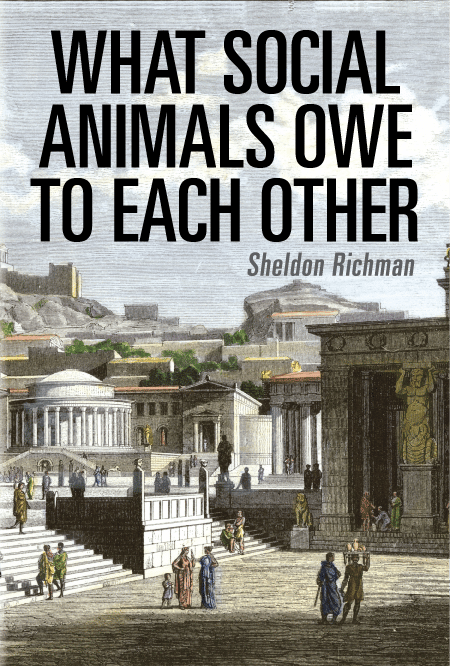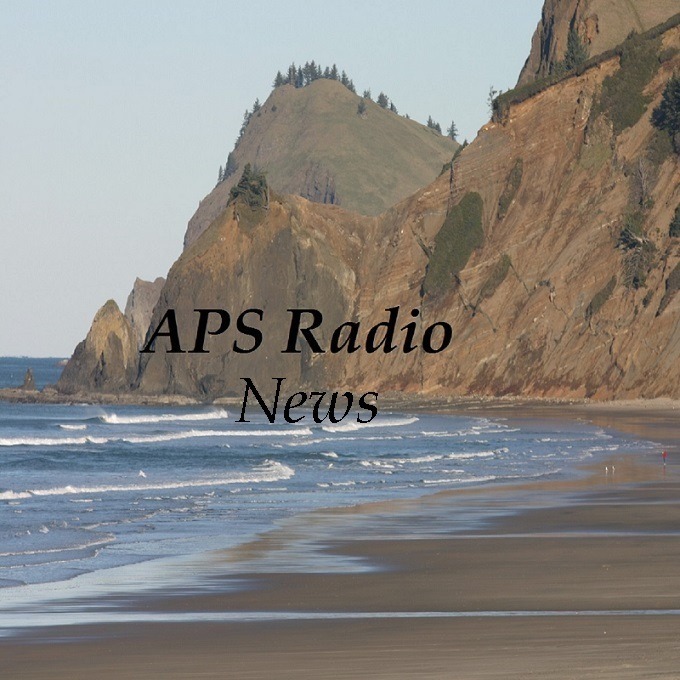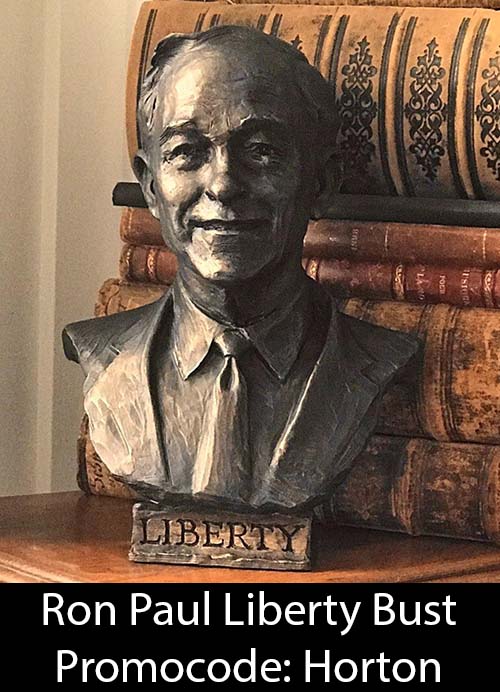Robert Stinnett, author of Day Of Deceit: The Truth About FDR and Pearl Harbor, discusses the evidence that FDR provoked the Japanese attack at Pearl Harbor (8-point plan), had forewarning that the attack was coming (radio intercepts, code-breaking), and willingly sacrificed thousands of sailors to get isolationist America into WWII.
Transcript
Scott Horton: All right, y’all. Welcome back to the show. I’m Scott Horton, and our next guest is Robert Stinnett from The Independent Institute at independent.org and author of Day of Deceit: The Truth About FDR and Pearl Harbor. Welcome back to the show, Bob. How are you doing?
Robert Stinnett: Thank you, and thank you for inviting me.
Scott Horton: Well, you’re welcome, and I appreciate you joining us very much today on Pearl Harbor Day 2012 here. So, if I remember the story right, sir, in 1995 the U.S. Senate held more hearings, as they had numerous times in the past, on the Pearl Harbor attack and on possible prior knowledge and deliberate blind eye turning by the Roosevelt administration December 7, 1941, and then as I remember the story being told in your book, Day of Deceit, they didn’t quite get to it because it was only when the Freedom of Information Act, your Freedom of Information Act lawsuits finally came through, that the last of the necessary documents were revealed that prove that the Roosevelt administration had deliberately provoked the attack and deliberately turned a blind eye to it, and that’s what Day of Deceit is. You wrote a book around the documents that prove that case for all time. Is that correct?
Robert Stinnett: Yeah, that is correct, though it was a joint congressional investigation in 1995, and they did not go into any of this information.
Scott Horton: Okay, and now how did you get interested in this case? Because I think you said before on this show, or actually I should have said in your bio that you’re a veteran of the Navy in the Pacific in WW II. In fact, you’re also a biographer of George Bush Senior and his World War II years, and so with that background in mind, could you please tell us how you got interested in the attack at Pearl Harbor in the first place?
Robert Stinnett: Yes, I was in the U.S. Navy in the Pacific in World War II and we had never been told about breaking the Japanese naval code by the U.S. Navy and I first learned about it in 1982 when I read the book At Dawn We Slept and they mentioned a U.S. Navy monitor station at Pearl Harbor that was listening in on the Japanese messages prior to Pearl Harbor. And I thought that would make a good story for my newspaper I was working on at the time, the Oakland Tribune, and they agreed, and I went over to Honolulu while advanced with the U.S. Navy, and they let me into this station. And there I met cryptographers who told me about their operation and told me where I would find the corroborating documents, which started [me] on my search for about 30 years.
Scott Horton: All right. And then I had always heard as a child, or the way that the story had been explained to me, that they had the diplomatic, they had broken the diplomatic codes and so they knew what all the civilian parts, quote unquote civilian parts, I guess, of the Japanese Imperial government were saying to each other, but that the navy had just kept this radio silence and they successfully snuck across the Pacific Ocean, halfway across it, and, hey, they just got us good. You know, these things happen.
Robert Stinnett: Yes. That is the story that was instructed, it had started in right after December 7th claiming that the Japanese Hawaii force was on radio silence. But there was this monitor station in Honolulu called Station HYPO that was listening into the station and getting radio direction finders, locations, as it moved across the North Pacific. And that’s what I was able to find and which I talk about in my book, Day of Deceit.
Scott Horton: Okay, now, well — yeah, we got to break this into pieces, and I wish I had found my old notes from back when I read the book the first time, but it’s been quite a few years now. But there are a few different things here. I guess I want to rewind a little bit to before the actual attack, and it’s a really intriguing part of the story to me. My friend Anthony Gregory, who is a fellow there of course at The Independent Institute, recounted to me an anecdote that, as you had told it to him, that this McCollum memo, which is so important in your book, about the months preceding the attack, that you had just kind of found it at random in the files that had been released to you. It was not in any logical place, and in fact maybe it was even sticking out a little bit to be found. Is that about right?
Robert Stinnett: Yes, that’s right. At the National Archives in Washington, I had filed a Freedom of Information Act to see the intercept questions and all of the advance intelligence on Pearl Harbor, and I discovered this, it was a U.S. Navy document calling for the United States to aim eight provocations at Japan that they said would, that the author said would cause Japan ‘to commit an overt act of war’ against the United States. So President Roosevelt adopted that on October 8th, 1940. This was 14 months before Pearl Harbor. And he implemented the eight provocations starting early in 1941 and aimed them all at Japan including sending U.S. cruiser divisions into Japanese territorial waters, and that really ticked off the Japanese.
Scott Horton: Mmhmm. All right, now, I was hoping that you could take us through this list. I think there’s what, eight or nine different provocations, and, you know, because, you know, you might have been in the Navy back then, Mr. Stinnett, but I wasn’t born till the ‘70s and all this stuff that happened back when all the footage was black and white, it just seems so far away, you know? And so I was hoping that you could kind of, you know, make it real, you know, to the people, what it was like at that time and what it really meant to implement these, as you call them, provocations.
Robert Stinnett: Yes, you’re right, and I’m happy to do that. There were eight provocations. Several of them were to embargo the selling or delivery of oil supplies to Japan, also natural resources such as tin and other types of metals that they could use for their war machine, and then one was to send U.S. cruisers into Japanese territorial waters, that I mentioned earlier, and that was done at various times in both in the spring and summer of [1941]. And then also the main thing was to keep the United States Pacific Fleet at Pearl Harbor as a lure to Japan, and the admiral in charge at the time this was adopted, he objected to President Roosevelt’s order and met him in the Oval Office and had a knock-down drag-out […] with the president telling him that the U.S. Navy has no confidence in his orders, so he was fired after that and put in — and Admiral Kimmel took over the job of commander of the Pacific Fleet. And then on July, the end of July 1941, President Roosevelt ordered the last of the provocations, which was a complete embargo of all war-making materials to Japan. And that really started them on the way, getting ready for war.
Scott Horton: Mmhmm. And then, so that really does kind of change the context. I mean, I guess in one sense you could, I could imagine that the argument at the time was that, well, hey, what the Japanese empire is doing is so horrible we shouldn’t sell them steel anymore to make these boats, especially if the theory was we’re going to end up at war with them anyway, but it’s a different context altogether when you’re saying that the reason that they did this wasn’t any morality about, you know, what the Japanese were doing in Korea or China or something, it was about trying to provoke them into feeling like they had no choice but to commit an overt act of war against us, to make a like a Hail Mary pass, try to sink as much of our fleet as possible on the first shot in a war that they saw as absolutely inevitable at that point, and we were trying to make them see it as inevitable rather than our guys were seeing it as inevitable, that’s what you’re saying here.
Robert Stinnett: Yes, that is correct, and that was President Roosevelt’s intention. It was mainly a back door to war. He really wanted to get at Germany, because Japan really was not the enemy that Germany was because they [Germany] had the huge war-making powers. So Japan and Italy and Germany, just a few days before this October 8th meeting, had signed a mutual pact that they’d come to one another’s defense if they got into a war situation. And that was on September 27th, 1940, and so the Navy made this plan to lure Japan to attack us and then that would bring us into war with Germany. And you see at the time there was a major isolation movement in this country led by leaders such as Charles Lindbergh, the first person to fly the Atlantic alone, there was Henry Ford and the Ford Motor Company, the Hearst newspapers and others that didn’t want to get involved in Europe’s war, and then Gold Star Mothers were picketing Congress, so this overt act of war was to end this isolation movement in this country, which by the way was favored by 80% of American people according to the Gallup poll at the time.
Scott Horton: Mmhmm. Well, and I think this is an important part of the show to stop and point out that you are not a crusty old Roosevelt-hating right-winger, but actually you agreed with the policy, that this had to be done to get the American people, that 80-something-percent majority were wrong, you say.
Robert Stinnett: Well, that’s right. I believe that this was the only option that President Roosevelt had because as the original Navy memo delivered to him said, that if we don’t do something, put these eight provocations in place, that Germany, which was bombing and getting ready to invade England at the time — that was in October 1940, that the German forces would invade and conquer England, seize the British navy, merge it with the Nazi navy, and then come over here and take over Canada, Bermuda and English possessions in the Caribbean, and at the time we did not have a navy that could fight them. So Roosevelt wanted […] or opposed to war, that’s what he saw as the only way to get in, get in at Germany.
Scott Horton: All right, now, I was hoping you could make the case here that this McCollum memo, which sure looks incriminating, actually meant anything to Roosevelt or the Secretary of War or anybody who was in charge of making the decisions here, because this guy McCollum after all was just a lowly intelligence officer in the U.S. Navy, right? How can you be so certain that his memo actually became the policy?
Robert Stinnett: Well, Commander McCollum was head of the Far East desk of the Office of Naval Intelligence. He was the man that it all passed through involving Japan and China and the Southeast Asia countries. So he was a top-notch man of getting orders, suggesting them to higher authority, and that’s what happened. His memo was written on October 7th. It moved fast and went to the office of the chief of Naval Intelligence, who gave it to Roosevelt, and he adopted that on October the 8th and then started war preparations from that time on.
Scott Horton: And they really just kind of went down the list implementing these policies.
Robert Stinnett: Yes. It’s all documented there in my book, and it’s amazing, when I found that this was all true, it was very difficult for me to believe that a president of the United States could do this type of thing, but he wanted to end — this is the only way he saw to end the isolation movement and really stop Germany in its tracks.
Scott Horton: Mmhmm. All right, now, tell me about J. Edgar Hoover’s role in this, because if I remember your book correctly, sir, he had agents in Hawaii who knew good and well that there were Japanese spies scoping out Pearl Harbor and taking notes.
Robert Stinnett: Yes.
Scott Horton: So how was he unable to make something happen there?
Robert Stinnett: Yes, that is right. After President Roosevelt’s first provocations were in place, Japan read what was happening. They sent a Japanese ensign to Honolulu. He was a lone spy, and he was attached to the consulate there and then spied on the Pacific Fleet and prepared bomb plots for the Hawaii, Japan’s Hawaii force. And all the time he was being surveilled by the FBI and Navy Intelligence. So they were getting his messages that he was sending to Tokyo, and Tokyo’s back, so they knew what he was up to. But they kept all this quiet. And then on December, the first of December, Tokyo asked him to give a military assessment of American preparations, asked are there really barrage balloons up over Pearl Harbor, and then where are the warships located? So on December 6th in the morning, the spy sent back from Honolulu to Tokyo saying that there are no barrage balloons up over Pearl Harbor and it’s all clear for a surprise attack on these places. And we intercepted that, so we knew what was going to happen, but it was never delivered to Admiral Kimmel until after the attack. So it was held up because really the cryptographic officer believed that the only way to save this country was to get an overt act of war that would unite the country and end the isolation movement.
Scott Horton: Can you connect — I also learned as a child that it was a lucky coincidence, a really lucky one, that all the modern aircraft carriers were out to sea that day and it was just the junky old World War I boats that got sank, of course with the people on them, but can you connect directly the decision to keep the best ships out at sea with the setup here for the blind eye?
Robert Stinnett: Yes. As soon as the Navy’s, U.S. Navy’s radio direction finders had located the Japanese carriers in the North Pacific, they decided to move all the modern warships out of Pearl Harbor. And that included carriers and their task forces, which included cruisers and the support ships. So there was about 25 of those modern ships were removed, ostensibly to deliver about a dozen aircraft to Wake Island and also to Midway Island, but actually these ships that were sent out, one did deliver to Wake but the other just sort of sailed around and didn’t go to Midway Island.
But — so what was left were old World War I vessels that could only go 18 knots, and these were the battleships that were sunk in Battleship Row at Pearl Harbor.
But see they couldn’t keep up with carriers to be a part of a carrier task force. You have to be able to go 36 knots. So these battleships were really worthless. But at the time, the battleships were the stars of the fleet. Most people didn’t realize that carriers were the new offense of all the navies of the world.
Scott Horton: Wow. And then, so now, what about the commanders at Pearl Harbor that morning? Were they just blind, deaf and dumb to this? Or they were in on it? Or how could it be that they didn’t have a chance to scramble any planes in defense? They didn’t shoot down — did they shoot down any of the Japanese Zeroes bombing them all morning? I mean, this was a complete disaster. How in on it were they, if at all?
Robert Stinnett: Well, you see, when the radio direction finders of our Navy located the Japanese carrier force in the North Pacific, it was dispatched, the information was sent immediately to Washington D.C. and arrived there on November 26th, and so President Roosevelt then acknowledged that and told the Hawaiian commanders and also the Philippine commanders to, the exact word was that the U.S. desires that Japan commit the first overt act. And so let them fire the first shot, but remain in a defensive position, don’t go into the offense. So that gave, that was an order from the Commander in Chief of the United States Navy, President Roosevelt. So they followed those orders, even though on the morning of December 7th when the Japanese, 300 of their aircraft were spotted by radar, nothing was done because they were following the orders of the president to stand aside and let Japan commit the first overt act. So they had a perfect alibi, but they were made the scapegoats because all of this information was withheld from the public.
Scott Horton: Yeah. And now, but at the time, well, and Roosevelt already had a hell of a lot of enemies by 1941, and many of them weren’t hesitant to accuse him of this — how widespread was the theory at the time that Roosevelt had deliberately allowed this to happen?
Robert Stinnett: Well, there was a professor of history at Yale University had written a book suggesting that Roosevelt had set up Hawaii for this attack, but he had no documentation and people believed that it was a surprise attack, that the Japanese were on radio silence, and we knew nothing about our tracking the Japanese fleet in the North Pacific because they wanted all that to be secret. It would be very harmful to President Roosevelt’s political life and the Navy if this came out. But once we got the Freedom of Information Act going, I was able to get this information. But it didn’t happen until after 1982.
Scott Horton: All right. Well, thank you so much for your time on the show today. It’s great to talk to you again.
Robert Stinnett: Thank you. I’m glad to be with you.
Scott Horton: Everybody, that is Robert Stinnett, author of Day of Deceit: The Truth About FDR and Pearl Harbor. And you can find an article by him at antiwar.com called ‘The Pearl Harbor Deception,’ and you can find a blog entry at antiwar.com by me from a few years back called ‘Day of Deceit.’ You just google ‘Day of Deceit,’ that’ll come right up on the first page of returns there, and that has some links including to this thing The Independent Institute — it’s not a very readable address, but it’s the Pearl Harbor archive at independent.org, so just search site independent.org for the Pearl Harbor archive, and there are many, many links to all the proof you need, the McCollum memo and all the rest of it. And get the book. It’s a great book. It’s a very readable book, and then you will know for sure that it’s true.
Podcast: Play in new window | Download


